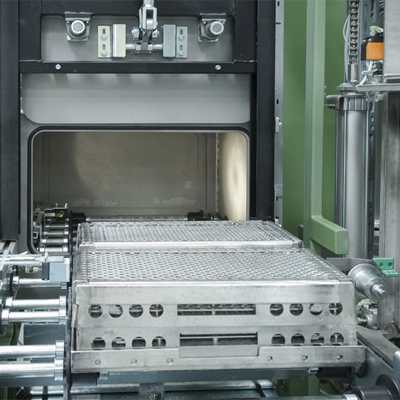How to Use Biodegradable and Eco-Friendly Materials in Automotive Manufacturing?

In recent years, the automotive industry has witnessed a profound paradigm shift fueled by the growing awareness of environmental sustainability and the urgent need to reduce the ecological footprint of manufacturing processes. As concerns about climate change and resource depletion intensify, automakers are increasingly turning towards innovative solutions to create vehicles that not only meet stringent performance and safety standards but also prioritize environmental responsibility. This transformative journey involves a strategic imperative to balance technological advancements with environmental stewardship. In this in-depth exploration, we delve into the strategies and considerations involved in utilizing biodegradable and eco-friendly materials in automotive manufacturing. From interior components to exterior materials, lubricants, and beyond, we examine the potential benefits and challenges faced by the industry as it strives for sustainable mobility solutions.
I. The Driving Force Behind Change
The automotive sector's journey towards eco-conscious manufacturing is rooted in a growing recognition of the profound impact of traditional production methods on the environment. As global consciousness shifts towards sustainability, automakers are compelled to reassess their practices and adopt greener alternatives. This commitment extends beyond mere compliance with environmental regulations; it signifies a strategic imperative to reimagine the entire manufacturing process.
II. Interior Materials: Paving the Way for Change
- Biodegradable Plastics: The first step in the green transformation involves a shift towards biodegradable plastics for interior components. These innovative materials, derived from renewable resources, offer a sustainable alternative to traditional plastics, reducing dependency on fossil fuels and contributing to a circular economy.
- Natural Fibers: The integration of natural fibers such as hemp, bamboo, and flax in interior components provides automakers with an opportunity to infuse sustainability into every aspect of vehicle design. These fibers, known for their strength and durability, can replace synthetic counterparts in carpets, seat covers, and insulation.
III. Exterior Materials: A Green Facelift for Vehicles
- Biodegradable Composites: Exploring biodegradable composite materials for body panels and exterior components is a pivotal aspect of green automotive manufacturing. By combining plant-based fibers with bio-resins, automakers can create durable and environmentally friendly alternatives to traditional materials.
- Recycled Metals: Prioritizing the use of recycled aluminum and steel for structural components minimizes the environmental impact of mining and manufacturing processes. Recycling metals not only conserves resources but also reduces energy consumption compared to producing materials from raw sources.
IV. Under the Hood: Bio-based Lubricants and Fluids
Utilizing bio-based lubricants and fluids derived from vegetable oils is a strategic move toward reducing the overall environmental impact of vehicle maintenance and operation. These alternatives offer comparable performance while minimizing the ecological footprint traditionally associated with petroleum-based lubricants.
V. Eco-friendly Insulation: Creating a Quieter, Greener Ride
Opting for insulation materials that are both energy-efficient and eco-friendly represents a crucial step in enhancing the overall sustainability of vehicles. Natural fibers like hemp or recycled materials can be used for soundproofing and thermal insulation, contributing to a quieter and more energy-efficient driving experience.
VI. Designing for a Circular Economy: Recyclable Components
Designing components with easy disassembly in mind is an essential strategy to facilitate recycling. Ensuring that different materials are easily separable and labeled for proper disposal promotes a circular economy, reducing waste and encouraging responsible end-of-life practices.
VII. Sustainable Manufacturing Processes: Reducing the Carbon Tireprint
Implementing sustainable manufacturing practices is fundamental to the overarching goal of green automotive manufacturing. This includes reducing waste, optimizing energy consumption, and incorporating eco-friendly processes in the production of automotive components.
VIII. Recycled or Reclaimed Materials: Closing the Material Loop
Incorporating recycled or reclaimed materials into various components further reinforces the commitment to sustainability. Whether it's using recycled plastics for interior parts, reclaimed wood for trim, or recycled rubber for specific components, this approach helps close the material loop and reduces the demand for virgin resources.
IX. Rolling Towards Sustainability: Biodegradable Tires
Researching and investing in the development of biodegradable or recyclable tire materials is a critical step in addressing one of the significant sources of automotive waste. Tires contribute substantially to environmental degradation, and the adoption of sustainable alternatives can make a substantial difference in reducing the environmental impact of vehicles.
X. Life Cycle Assessment (LCA): Understanding the Holistic Impact
Conducting a comprehensive life cycle assessment (LCA) of the materials used is crucial in understanding the environmental impact at every stage, from raw material extraction to manufacturing, usage, and disposal. This holistic approach helps identify areas for improvement and guides the continuous refinement of sustainable practices.
XI. Certifications and Standards: Setting the Bar for Green Excellence
Adhering to eco-friendly certifications and standards in the automotive industry is a tangible demonstration of a manufacturer's commitment to sustainability. Utilizing materials certified as biodegradable, recyclable, or meeting specific environmental criteria provides consumers with assurance and sets a benchmark for industry-wide green excellence.
XII. Collaborative Innovation: Driving Towards a Sustainable Future
Collaboration with suppliers, research and development initiatives, and a steadfast commitment to sustainable practices are essential components of successfully integrating biodegradable and eco-friendly materials into automotive manufacturing. The industry's collective effort to balance performance, safety, and durability with environmental responsibility will define the future landscape of sustainable mobility solutions.
In conclusion, the automotive industry's journey towards adopting biodegradable and eco-friendly materials is a multifaceted endeavor that requires a holistic approach. From the interior to the exterior, under the hood, and throughout the manufacturing process, every aspect of vehicle design and production presents an opportunity to make greener choices. As automakers continue to navigate the green highway, the pursuit of sustainable mobility solutions goes beyond a mere trend; it represents a strategic imperative for a harmonious coexistence between technology and the environment.



